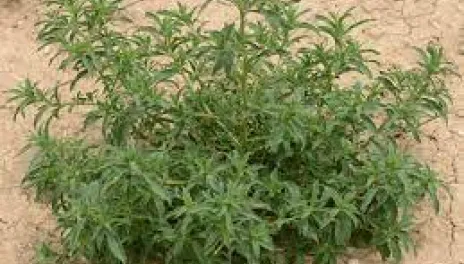Kochia Management
Hello! I hope all is well.
We received about five inches of snow in the past week. Temperatures were about eleven degrees Fahrenheit above normal in the past week.
Central Dakota AG Day is on December 16, 2021 from 9:00 AM to 3:30 PM at the Carrington Research and Extension Center. It will be an excellent meeting for livestock and crops people.
Kochia has always been a concern in North Dakota when managing weeds, but it has become more difficult in recent years. Resistance to herbicides is the reason for the more difficult control. In North Dakota, kochia has been confirmed resistant to ALS inhibitor herbicides (Group 2), Growth Regulator herbicides (Group 4 – 2,4-D, dicamba, and Starane), Photosystem II Inhibitor herbicides (Group 5 and 7), EPSP synthase inhibitor herbicide (Group 9 – glyphosate), and resistance to Groups 2, 4, and 9 within the same plant! This multiple resistant biotype is the one of most concern because of it’s growing presence and lack of control by so many herbicides.
Last fall I conducted my second survey of weed control in soybean fields in early-September by driving about 73 miles through parts of 13 townships in Griggs County. I rated the weed control as no weeds, a 1 meaning an occasional plant of a species, a 2 meaning a patch or patches of 8 or more plants scattered in the field or a 3 meaning numerous patches or individual plants spread throughout the field. Only 14% of fields were weed free in 2021 compared to 21% in 2020. The most prevalent weed in soybean fields near harvest in 2021 was kochia at78% compared to only 35% in 2020. The percentage of fields with a rating of 1 was 59%, for 2 was 10%, and for 3 was 9%. The average rating of kochia in fields was a 1.36, the highest of all weeds. This is a large concern to me especially since kochia tolerates high salt areas where there is no crop and that kochia easily breaks off at the base of the plant and starts rolling across fields spreading seeds.
To identify kochia look for short linear cotyledons (remnants of the seed). The first two true leaves come out at the same time meaning they are oppositely attached and the leaves are very hairy. Sometimes the next two leaves can come out in a pair as well, but all subsequent leaves emerge one leaf at a time. True leaves are linear and short initially, but become longer as the plant ages. The stem is grooved and branches are very prevalent at the base of the plant.
One positive aspect of kochia is that most seeds germinate the next growing season. Therefore if complete control can be obtained for three years it could be eliminated.
Herbicides providing excellent control include all HPPD inhibitors plus atrazine, sulfentrazone, Corvus, dicamba applied preemergence, Sharpen at 2 to 3 fluid ounces per acre, Verdict at 10 to 18 fluid ounces, atrazine at 0.5 to 0.75 pounds active ingredient per acre, DiFlexx Duo, Huskie FX, Liberty, and Starane NXT. To control kochia in wheat mix together bromoxynil, fluroxypyr, and pyrosulfotole or biclyclopyrone all at maximum rates.
